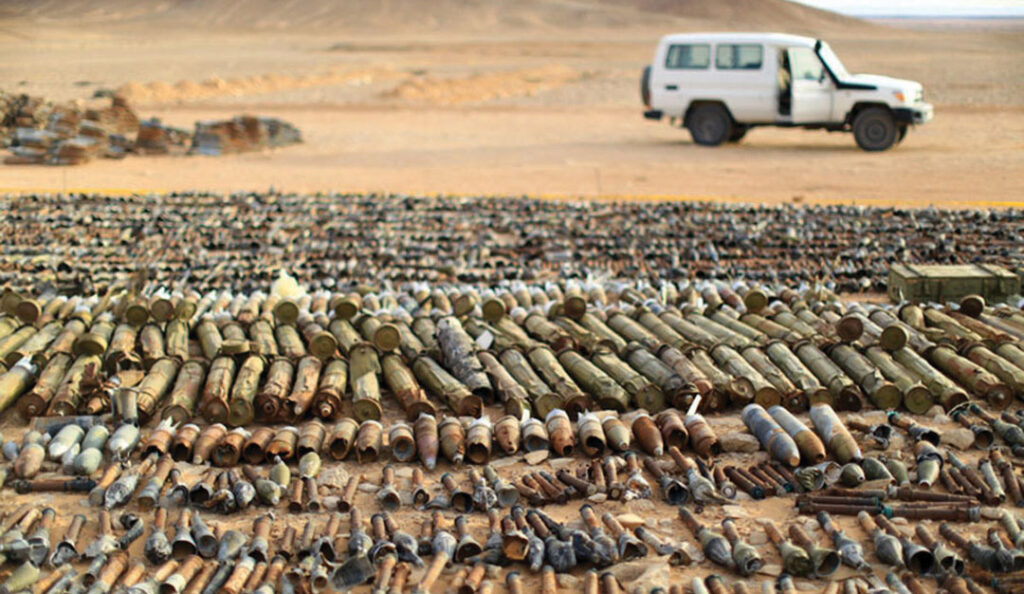In a symbolically important display, Libya’s Criminal Investigation Department destroyed 2 tons of ordnance, explosives and other war remnants collected from the Al-Heera area.
The move is part of an effort to restore safety to the country after years of conflict. Combatants including mercenaries from Russia’s notorious Wagner Group placed land mines and improvised explosive devices in civilian areas they occupied.
Between 2020 and 2025, these types of explosives killed at least 125 people and injured more than 300 people in Libya. “Each incident carries immense human and psychological weight,” said Fatma Zourrig, head of the Mine Action Programme for the United Nations Support Mission in Libya.
In 2024, 8,300 explosive remnants of war were disposed of in the country. Residents have slowly returned to their homes in mined areas, such as the southern suburbs of Tripoli, which Wagner forces had occupied. However, much work remains to clear the weapons. A 2023 report by the U.N. Support Mission in Libya found that 15 million square meters of land still contained explosive ordnance.
“The indiscriminate use of weapons in civilian areas during the recent conflicts means even urban areas are littered with explosive remnants of war,” the U.N. said. “These remnants of conflict obstruct safe access to education, health care and development, and continue to injure or kill long after the fighting has ceased, posing a daily threat to life and livelihoods.”

